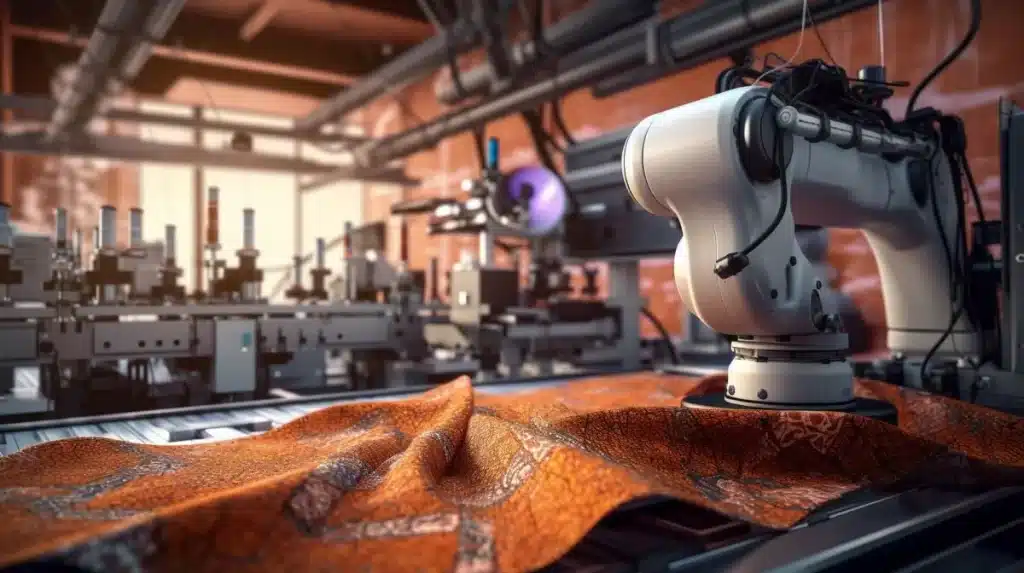Global Textile Trends 2025: The Rise of Innovative Garment Manufacturers Worldwide is reshaping the fashion industry, driven by technological advancements, sustainability initiatives, and evolving consumer preferences. As the world becomes more interconnected, garment manufacturers are leveraging cutting-edge innovations to meet the demands of a global market that values both style and responsibility. This transformation is not just about creating new fabrics or designs; it’s about redefining the entire production process, from sourcing materials to final delivery. The textile sector, once dominated by traditional methods, is now witnessing a surge in creative and sustainable practices that are setting new benchmarks for quality and efficiency.
Technological Advancements in Textile Production
One of the most significant factors contributing to the rise of innovative garment manufacturers is the integration of advanced technologies into textile production. Automation, artificial intelligence (AI), and 3D printing are revolutionizing how garments are designed, manufactured, and distributed. For instance, AI-powered design tools allow manufacturers to create customized patterns and predict trends with greater accuracy, reducing waste and improving efficiency.
In addition, 3D knitting machines are enabling the creation of seamless garments, eliminating the need for multiple pieces and minimizing material waste. These machines can produce complex designs in a single step, significantly reducing production time and costs. Companies like Adidas and Nike have already adopted such technologies, demonstrating their potential to transform the industry. Furthermore, blockchain technology is being used to enhance transparency in supply chains, allowing consumers to trace the origin of their clothing and ensuring ethical production practices.
Sustainability as a Core Value
Sustainability has become a central theme in the textile industry, with many manufacturers adopting eco-friendly practices to reduce their environmental impact. The use of recycled materials, organic cotton, and biodegradable fabrics is on the rise, as consumers increasingly prioritize ethical consumption. Brands are also investing in water-saving dyeing techniques and energy-efficient manufacturing processes to minimize their carbon footprint.
Innovative companies are exploring alternative materials such as mushroom leather, algae-based textiles, and recycled plastic bottles to create sustainable alternatives to conventional fabrics. These materials not only reduce waste but also offer unique textures and properties that appeal to modern consumers. For example, brands like Stella McCartney and Patagonia have been at the forefront of using sustainable materials, setting a precedent for the rest of the industry.
Consumer Demand for Personalization and Speed
The digital age has transformed consumer expectations, with a growing demand for personalized and fast-fashion products. Consumers now expect tailored experiences, including custom-fit clothing and on-demand manufacturing. This shift has prompted garment manufacturers to adopt flexible production models that can quickly adapt to changing trends and individual preferences.
E-commerce platforms and direct-to-consumer (DTC) models have further accelerated this trend, allowing manufacturers to reach a global audience without the need for physical retail spaces. By leveraging data analytics, companies can gain insights into consumer behavior and adjust their product offerings accordingly. This level of responsiveness ensures that manufacturers remain competitive in an ever-evolving market.
Collaborations and Cross-Industry Partnerships
Innovation in the textile industry is often fueled by collaborations between manufacturers, tech companies, and research institutions. These partnerships enable the development of new materials, production techniques, and business models that push the boundaries of what is possible. For example, partnerships between textile producers and biotech firms have led to the creation of bioengineered fabrics that are both durable and environmentally friendly.
Moreover, cross-industry collaborations are helping to bridge the gap between traditional craftsmanship and modern technology. Artisans and designers are working alongside engineers to create hybrid products that combine heritage techniques with contemporary innovations. These efforts not only preserve cultural traditions but also open up new markets for sustainable and high-quality textiles.
The Future of Garment Manufacturing
As we look ahead, the future of garment manufacturing appears to be shaped by continuous innovation, sustainability, and a deep understanding of consumer needs. The rise of smart textiles, which incorporate sensors and other technologies to enhance functionality, is another area where manufacturers are making significant strides. These textiles can monitor health metrics, regulate temperature, or even change color based on environmental conditions, offering new possibilities for both fashion and utility.
Additionally, the adoption of circular economy principles is gaining momentum, with manufacturers focusing on recycling, repairing, and repurposing garments to extend their lifecycle. This approach not only reduces waste but also creates new revenue streams through resale and rental models.
In conclusion, the global textile industry is undergoing a profound transformation, driven by technological advancements, sustainability efforts, and shifting consumer preferences. The rise of innovative garment manufacturers worldwide is not just a trend but a fundamental shift that is redefining the way we think about fashion and its impact on the planet. As these changes continue to unfold, the industry is poised to become more efficient, responsible, and responsive to the needs of a rapidly evolving world.
